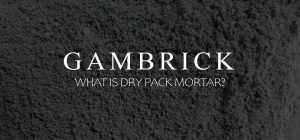
Why Does Concrete Get Hot?
Concrete gets hot for two main reasons, curing and the sun. Concrete is made from sand, cement and aggregate stone. When you mix these 3 ingredients together and add water, a chemical reaction occurs which dries and hardens the concrete as well as producing heat. This process is called curing and typically takes 28 days to complete. As the concrete cures it gains in strength and releases heat. Once curing is complete the concrete cools. The second more common reason concrete gets hot is the sun. Like all masonry products, concrete is great at absorbing and holding energy.
If concrete changes color and becomes black, it can get even hotter because dark colors absorb more light than light colors.
Concrete is a great material for absorbing and storing heat from the sun. When people ask why concrete gets so hot they’re generally talking about the hot surface of patios, sidewalks and concrete around a pool in summer. If you ever step onto a concrete patio from grass or a wood deck you’ll feel the difference right away. Concrete can get really hot. And it can stay that way for hours after the sun goes down. But why is that?
Although it can get very hot, concrete will not burn. It doesn’t contain organic material so it won’t catch fire no matter how hot it gets.
Ahead we’ll discuss why concrete gets so hot from the sun and look at the curing process in more detail.
Sunlight
The most common reason for hot concrete is the sun. Curing only last 28 days but the sun can heat your concrete every day of the year. Sunlight is the primary source of heat for the entire earth and it has a strong effect on concrete.
Concrete has a very high capacity for storing heat. Meaning it can warm to higher temperatures then most other materials and releases that heat more slowly. On a hot summer day, even concrete that’s in the shade can easily average 70°F, however, concrete that’s in direct sunlight can reach 135°F. Builders test this with a device called an infrared thermometer.
Concrete has a very high heat capacity. This is largely due to two main factors.
- Concrete has a very dull surface which doesn’t reflect much light. Rather, the sunlight that hits the concrete is absorbed.
- Concrete’s makeup is great at storing energy which is basically what heat is. It’s a form of energy released by the sun.
These two factors working together are why concrete is so great at absorbing and storing heat and why it feels so hot in summer.
Concrete eventually emits that heat back into the atmosphere as it cools which raises the air temperature around it. This is why cities tend to be a few degrees hotter at night than surrounding rural areas. The heat that was absorbed into the concrete by day is slowly released at night which warms the city. This is also a factor in Winter, although when it’s cold out people don”t mind the effect as much.
Concrete Gets Very Hot
In addition to storing heat for long periods of time, concrete also gets hotter than most other materials. When builders test grass that’s in direct sunlight all day, it rarely gets over 80°F. Wood can reach 90°F, composite decking 100°F, but concrete can get as hot as 175°F. That’s too hot for most people to walk barefoot on. Have you ever seen an egg fried on hot concrete? It can be done in States like Arizona and Nevada.
There’s not much you can do to stop concrete from getting so hot in summer other than getting some shade. Preventing the concrete from soaking up the suns rays is really all you can do. There are no additives or sealers you can put on the concrete which prevent it from heating up.
Cooling down the surface with water helps a lot but only as long as the surface is wet.
Air Temperature & The Earth
It’s not just the sun’s rays that heat concrete. The temperature of the air and Earth are also contributors to your concrete’s temperature.
In summer, when the air is hot but it’s cloudy, the concrete can still be hot. This is because concrete absorbs not only the suns rays but also ambient heat out of the air and Earth. Concrete is rarely more than a few degrees cooler or hotter then the average temperatures around it because of how good it is at absorbing energy. For example, if you put a slab of concrete in the shade next to wood, dirt, grass and tile, the concrete will be the warmest. In Winter, concrete will stay warmer than other materials and in summer it will get hotter.
The Earth’s temperature passes into and through concrete. This is why in desert areas like Arizona, concrete can get extremely hot even in the shade. The combination of a hot ground mixed with hot air heats up concrete no matter what you do.
The Benefits Of Hot Concrete
Concrete getting hot from the sun can be a great thing. While many people complain about their concrete patio getting too hot to walk on in Summer, many builders are using concrete’s high energy capacity as a way of heating the home.
In ultra energy efficient homes called Passive House. Concrete floors and walls along with large insulated windows are used as a way to heat the home. By day, windows let in sunlight which absorbs into the concrete. By night, the concrete releases that stored heat into the home. Because Passive House uses extremely high levels of insulation and a near air tight seal, all that heat stays inside the home.
Heating a home with hot concrete is a very energy efficient way to live. It’s considered green, saves money on energy bills each month and works as long as the sun is shining no matter the season or outside temperature. Although when the sun is down or blocked by clouds you’ll need to supplement with another heat source.
Artificially Heating Concrete
Because of how great concrete is at absorbing and storing heat, it makes a great heated floor both inside and outside the home.
Radiant floor heating is a great way to heat a home. Tubes filled with hot water or electric coils are placed inside a concrete slab. When needed, the elements are heated which warms the concrete. That energy heats up the entire floor evenly and radiates the air all day. It’s a very comfortable heat that’s consistent and comfortable. And once the concrete is at the desired temperature, it puts out heat for hours without needing a constant supply of hot water or electricity.
This same form of radiant slab heating can be used outdoors on things like patios, driveways, walkways and sidewalks. Heating an outdoor concrete slab is a great way to melt snow and ice and it’s done in the exact same was as the indoors.
While many people consider hot concrete to be a bad thing, and it can definitely be uncomfortable to walk on at time, it has some big benefits too.
Curing
Concrete goes through two processes after it’s poured. The first is drying. Water evaporates out which hardens and strengthens the concrete.
However, concrete doesn’t dry out completely. Curing requires some water to occur which is why in some very hot areas masons will wet the concrete’s surface as it cures. Water and cement chemically react and bond together over a long period of time which strengthens the concrete.
It’s a little known fact outside the construction industry that the curing process generates heat. This happens because of the chemical reaction between cement and water which is called hydration. Heat is generated during these reactions as the concrete continues to cure for around 28 days.
Curing is a very important part of building with concrete. Without it, the concrete will never reach it’s full potential. Concrete’s strength is measured in pounds per square inch or psi. When a Quikrete bag of concrete says 3500, that number means 3500 psi. The higher the number the stronger the concrete. The number also means after full curing has taken place. The number is a potential strength, not an absolute. At 10 days, a 3500 psi concrete is only around 1500. It’s only after 28 days of proper curing that it realizes that full 3500 psi.
In small construction projects, the heat generated by curing isn’t typically an issue. But for large scale construction projects, like pouring a damn or bridge foundation. Concrete must be poured in a very specific way in order to manage it’s heat.
How Much Heat Is Generated By Curing Concrete?
In general, for every 100 pounds of cement used, concrete gains anywhere from 10 to 15 degrees Fahrenheit during curing. Controlling the temperature of concrete as it cures is very important to insure that it cures over a long enough period of time. If curing is stopped before 28 days the concrete can be weaker and brittle. The factors that affect curing are both internally generated heat, external temperature and humidity.
Ideally, concrete should be poured and cured at an internal temperature of 50 to 90 degrees Fahrenheit. On a cold day, this means you may have to heat the concrete with a warming blanket. On a hot day, the concrete may need to be kept cool by wetting the surface.
Ideally you should not pour concrete when it is too hot or too cold. In Winter, concrete should be poured during the warmest time of day when the sun is out. It should then be kept warm as the sun sets. In summer, pour concrete after mid day as the sun goes down and keep it as cool as possible.
Why Curing Produces Heat
Concrete hydration is an exothermic process that generates heat through chemical reactions. Hydration produces heat as it sets and cures over time.
Most people think concrete is simply drying out over time, but this is only partially true. It’s actually going through a chemical reaction that alters it’s water molecules and creates solids. The effect is dry concrete but it’s not due to evaporation.
The byproduct of this ongoing chemical reaction is heat. As long as the reaction is going on heat will continually be produced.
With most residential concrete work, like sidewalks, patios, steps and basic footings, heat isn’t a huge issues. Builders keep the concrete warm in Winter and cool in Summer. But with large scale industrial construction, such as pouring a concrete dam and huge foundation, heat management requires some extra measures. If the concrete’s temperature gets too high, the structure can crack.
Heat causes internal expansion that the concrete can’t maintain without breaking. With large structures, the maximum temperature difference between the interior and exterior concrete should not exceed 36°F.
Why Concrete’s Curing Temperature Matters
The reason concrete’s curing temperature matters is simple, strength.
If concrete gets too hot, it can harden and gain strength too quickly, which lessens it’s final psi. If concrete stays cold, it may not set, and again, the concrete won;t achieve full strength. Curing between the ideal temperatures of 50 to 90 degrees results in the strongest concrete. Curing concrete should happen slowly over a long period of time. If it’s rushed or interrupted the result is generally weaker concrete.
Besides using external methods like wetting concrete when it’s too hot or insulating it when too cold, the heat generated by hydration can also be affected by the concrete’s ingredients. Different combinations of aggregate, sand and cement can alter how much heat is generated while the concrete cures and sets. Because of this, The concrete’s formula also plays a role in guaranteeing a solid final product, based on the size of the job and the state of the weather.
When you buy premixed bags like Quikrete or order concrete from a truck, the formula is made for you and is generally consistent. But when you mix your own concrete on site it’s up to you to adjust your ingredients as needed.
Why Hot Weather Is A Problem
When it comes to curing concrete, hot weather causes fast water evaporation. This dries the concrete too quickly which effects curing. Water is an important part of the chemical reaction that cures and strengthens concrete. If there isn’t enough water to react with cement, the concrete will be weakened.
It may be necessary to add additional water so that curing can take place. The rate of temperature change, aggregate type, and ingredient ratios can all influence how concrete cures at higher temperatures.To solve this, masons pour concrete when the air is cooler and spray water on top of the concrete to keep it damp. They also cover concrete in plastic which helps retain evaporated water on the surface.
Sudden temperature changes can lead to concrete cracks due to something called thermal shock. When working with concrete, it’s important to keep track of water evaporation due to temperature and sunlight. Without enough water, the cement cannot bind to the aggregate which means weaker concrete and a lower psi.
Why Cold Weather Is A Problem
Pouring and curing concrete when it’s too cold is just as bad as when it’s too hot. As concrete cures, it needs a certain amount of heat for the chemical reaction to occur. This means that when the ambient temperature is too cold, the curing process will essentially freeze because one of the key components is water. This tends to occur around 50°F.
It’s very important to pour your concrete when the ambient temperature is right. Both too hot and too cold are very bad for the curing process and can result in weak concrete.
When there’s no choice and you have to pour in sub optimal temperatures, concrete warming blankets can be used to keep the concrete at the correct temperature. Make sure you have these on hand when pouring concrete in the cold.
Types Of Cement
One of the biggest influences on the amount of heat produced during curing is the kind of cement that’s used. Below we’ll go over the three most commonly used types of cement.
Type 1 Cement. This is the standard cement mix used in most concrete. It doesn’t have any special ingredients to decrease the amount of heat emitted during curing.
Most construction projects use Type 1 cement unless they want to alter the curing process.
Type 2 Cement. This mix is designed to produce less heat over a greater period of time. It is commonly used in large structures such as foundations and heavy walls.
Type 4 Cement. Type 4 produces only minimal amounts of heat during curing. It’s typically used in massive projects like building dams. In enormous concrete structures like gravity dams, the heat produced during curing can be enough to crack the entire damn. In projects this large it’s very important to manage internal heat levels.
Summary: Why Does Concrete Get Hot?
Concrete gets hot for two main reasons, curing and the sun. Concrete is made from sand, cement and aggregate stone. When you mix these 3 ingredients together and add water, a chemical reaction occurs which dries and hardens the concrete as well as producing heat. This process is called curing and typically takes 28 days to complete. As the concrete cures it gains in strength and releases heat. Once curing is complete the concrete cools. The second more common reason concrete gets hot is the sun. Like all masonry products, concrete is great at absorbing and holding energy.
Concrete is a great material for absorbing and storing heat from the sun. When people ask why concrete gets so hot they’re generally talking about the hot surface of patios, sidewalks and concrete around a pool in summer. If you ever step onto a concrete patio from grass or a wood deck you’ll feel the difference right away. Concrete can get really hot. And it can stay that way for hours after the sun goes down. But why is that?
Ahead we’ll discuss why concrete gets so hot from the sun and look at the curing process in more detail.
If you have any questions or comments e-mail us any time. We’d love to hear from you.

John Mazzuca | About | More Posts |
Custom Home Builder
John Mazzuca is a custom home designer and builder at Gambrick with over 25 years experience in the construction industry. John has designed, built and/or remodeled hundreds of homes, small buildings, and commercial projects. He writes about business, real estate, home building, and household electronics. His work has been featured in Fox Business, Better Homes & Garden, House Beautiful, and more.




















